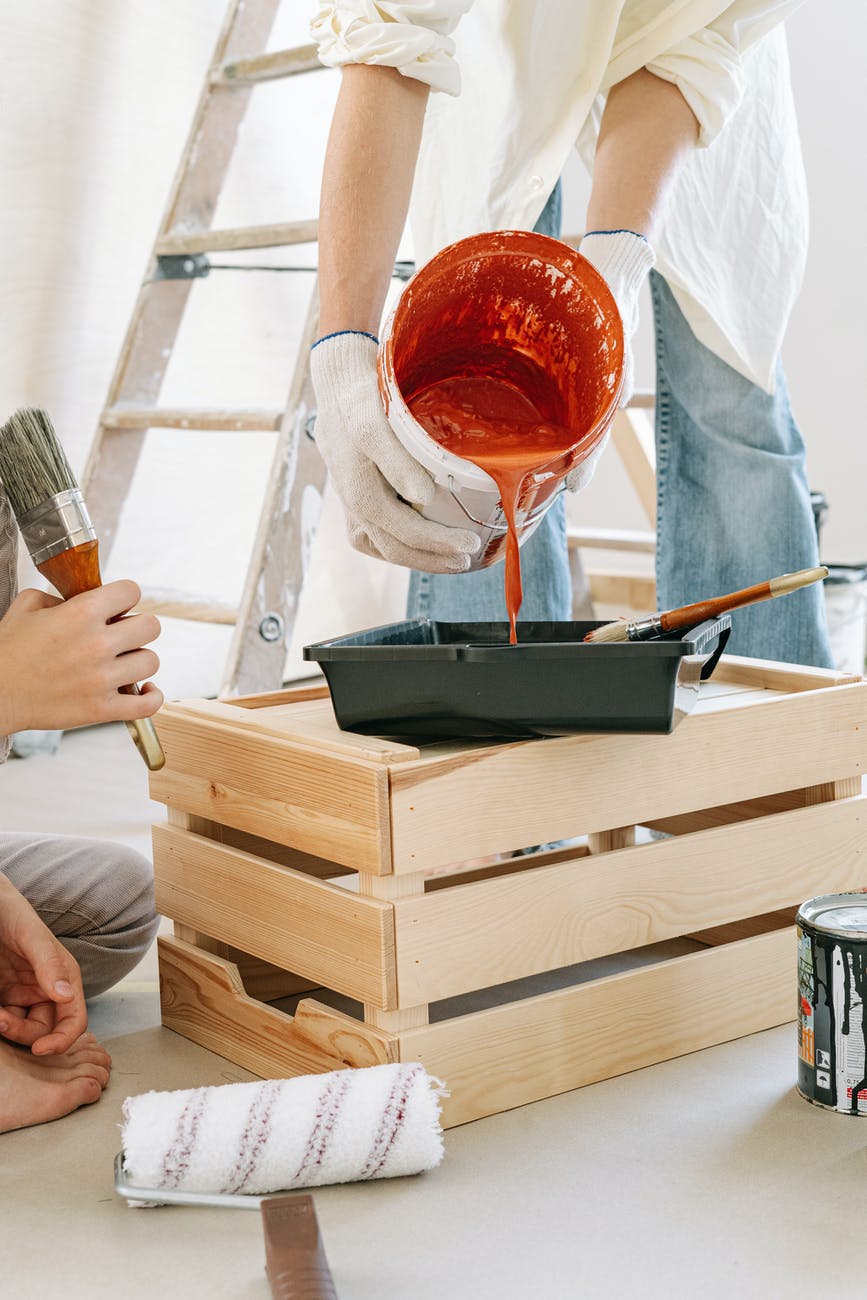Successful painting jobs involve more than simply buying cans of paint and throwing it on walls; quality contractors understand it is necessary to properly prepare surfaces before starting painting projects.
For optimal results, this procedure includes leveling the surface, repairing any cracks that exist, lightly sanding hard or slippery surfaces and applying a stain-blocking primer.
Clean
Cleaning surfaces thoroughly prior to painting them is one of the most critical steps of preparation for successful results. Paint won’t adhere well to an uneven or dirty surface and, without proper prep work, new coats of paint won’t look as nice or last as long.
Before painting a wall, the best way to clean it is with a sponge and water. For heavily soiled or stained areas, using a mild detergent solution might be necessary; kitchens might use dish soap while crayon marks in kids’ rooms require strong cleaners such as TSP (trisodium phosphate). When searching for alternatives that do not contain harmful phosphates such as TSP it is crucial to select products without these harmful phosphates, since their presence harms the environment.
Repainting previously-painted surfaces requires lightly sanding them first to remove glossy areas and smooth any sharp corners, then wiping and drying thoroughly afterwards. If your previous oil-based layer was oil-based, use a Q-tip dipped in nail polish remover or denatured alcohol to rub over small sections of surface to check for oil residue; if any exists then extensive sanding must take place across all of them.
Seal
If you want your paint job to stand the test of time, sealer should be used. For optimal results, follow manufacturer-recommended product and application instructions when applying sealers. Find out the best painter Melbourne.
Before applying your final coat of paint, sealant application should take place prior to applying any final layers. Allow enough time for this step to dry completely as otherwise your paint could begin peeling or cracking over time. If this step is missed out altogether, chances are your finish may peel or crack later on down the road.
Keep all items you don’t want painted safe from paint spillage – plants, furniture and fixtures such as fixtures – by placing down tarps to cover surfaces or masking tape to mark off areas that need special protection. A piece of clean paper may also work to cover windows, electrical outlets and utility heads etc.
Sand
Sanding is an essential step when painting new surfaces or refreshing old paint; using medium grit sandpaper or block to ensure smooth surfaces and to ensure that paint adheres well. Once dulled, clean away dust before leaving them to dry thoroughly before wiping clean.
Primer should always be used when painting surfaces to help ensure the paint bonds securely with them, particularly for humid or wet environments such as drywall. Applying primer can prevent bleeding through and provide even coverage and color.
Many decorative paints, like Annie Sloan furniture paint, don’t require priming and sanding prior to application, making the process faster. Still, it is always wise to perform an adhesion test on a small area of the piece to determine any adhesion issues or compatibility problems with your type and brand of paint before beginning work on it.
Apply Primer
If primer is not applied correctly, the finished paint job may look patchy and uneven. To ensure an even coat, use a brush, roller or airless sprayer and apply thin layers of primer over time.
Though applying primer may seem unnecessary, it provides an extra layer of protection that ensures paint adheres to surfaces properly and conceals surface stains – something especially helpful when painting over darker surfaces or lightening darker colors.
Paint failures (such as peeling, old color bleeding through and wear over time) are usually due to neglecting proper surface preparation steps. Proper preparation promotes adhesion between substrate and coating layers while sealing/stain-blocking as necessary and adding longevity to your project. For optimal results always adhere to your company’s recommended methods; such as:
